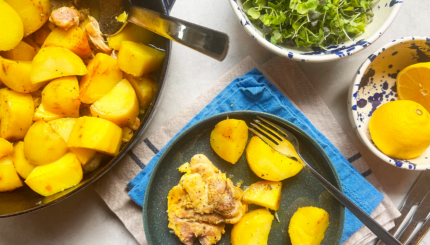As Jews around the world look forward to celebrating Tu Bishvat, the “Birthday of the Trees,” Indian Jews are hoping their unique malida ritual will be embraced across the globe.
In addition to being a celebration of nature, the potential of spring, and the connection to the agricultural cycles in the land of Israel, the holiday of Tu Bishvat holds special meaning for Indian Jews. According to legend, it is on this day that seven Jewish men and seven Jewish women from ancient Israel were shipwrecked off the coast of ancient India. Fearing for their lives, the 14 survivors prayed to Eliyahu Hanavi (Elijah the Prophet) and were saved. In memory and thanksgiving, Indian Jews mark Tu Bishvat with a special ceremony called malida.
According to Rabbi Romiel Daniel, the leader of the Rego Park Jewish Center in New York, the term malida comes from the Persian word for “confection.” The ceremony includes a series of prayers which are offered to Eliyahu Hanavi—or Eliyahu Habavi, as Indian Jews pronounce it—and other ancestors. The format of the ceremony did not become fixed until the late 18th century, and it is not exclusive to Tu Bishvat. “Any time there is an auspicious occasion, a new baby, a new house, a marriage or improved health, we do a malida,” Rabbi Daniel said. “Eliyahu is a protector of the individual and the community. He never died; he was just taken away. He is the protector of any happy occasion and guards against the evil eye.”
According to Indian Jewish tradition, Eliyahu ascended in his chariot to heaven from India. Proof of this miracle can supposedly be found on a rock where the skid marks of his chariot and the hoof marks of his horse can be seen to this day.
After prayers are offered, members of the community are invited to eat from the malida offering. Sweetened dried rice mixed with fruits, nuts, and aromatics are piled high in the center of a round plate. The shape of the rice is meant to represent Mt. Sinai. According to some sources, the origins of this offering harken back to the offerings made in the Holy Temple in Jerusalem. Other sources suggest that this offering draws upon Indian customs that were adapted to Jewish sensibilities. No matter its origins, the offering commonly includes pieces of five to seven different fruit that are placed around the base of the rice mountain. After the traditional blessings are recited, participants eat from the offering plate.
Hadassah Pezarker is an Israeli-Indian who was born and raised in Ashdod and who now lives in Tel Aviv. One of a new generation of Indian-Israelis who are working to advance, record, and preserve the history of Indian immigration and culture, Pezarker and her fellow activists achieved an important victory this year: They were able to introduce the Tu Bishvat malida into the official school curriculum in Israel. “This change will help ensure that this beautiful custom gains understanding and popularity,” Pezarker said.
In celebration of the broader recognition of malida by the Israeli government, Pezarker is encouraging Jews around the world to join together in simultaneous malida ceremonies. The ceremonies will take place on Monday, February 10, 2020. Participants are encouraged to upload videos or photos to Facebook using the hashtag #Malida2020.
Malida — Sweetened Poha
4 cups Poha/pressed rice available in Indian groceries or online
1/2 cup sugar
1/2 cup unsweetened grated coconut
5-10 cardamom pods, shelled and ground
Handful golden raisins
Cut up slices of apple, pear, orange, banana and a date.
Garnish:
Handful raw almonds, blanched, peeled and sliced
Handful raw pistachios, shelled, blanched, peeled and sliced
Handful each of cut and fine sliced almonds and pistachios
1) clean and Soak Poha in very little water for few minutes until softens.
2) Run through a large sieve to drain all water out and press on top lightly to rid of excess water.
3) In a large bowl add the drained Poha and sugar Add the sugar immediately so it will blend in smoothly and not remain grainy.
4) Add the cardamon and grated coconut and raisins. Garnish with nuts
5) Plate on large round plate in the shape of a mountain. Surround with 5-7 types of fruits, with a minimum of five pieces of each.



